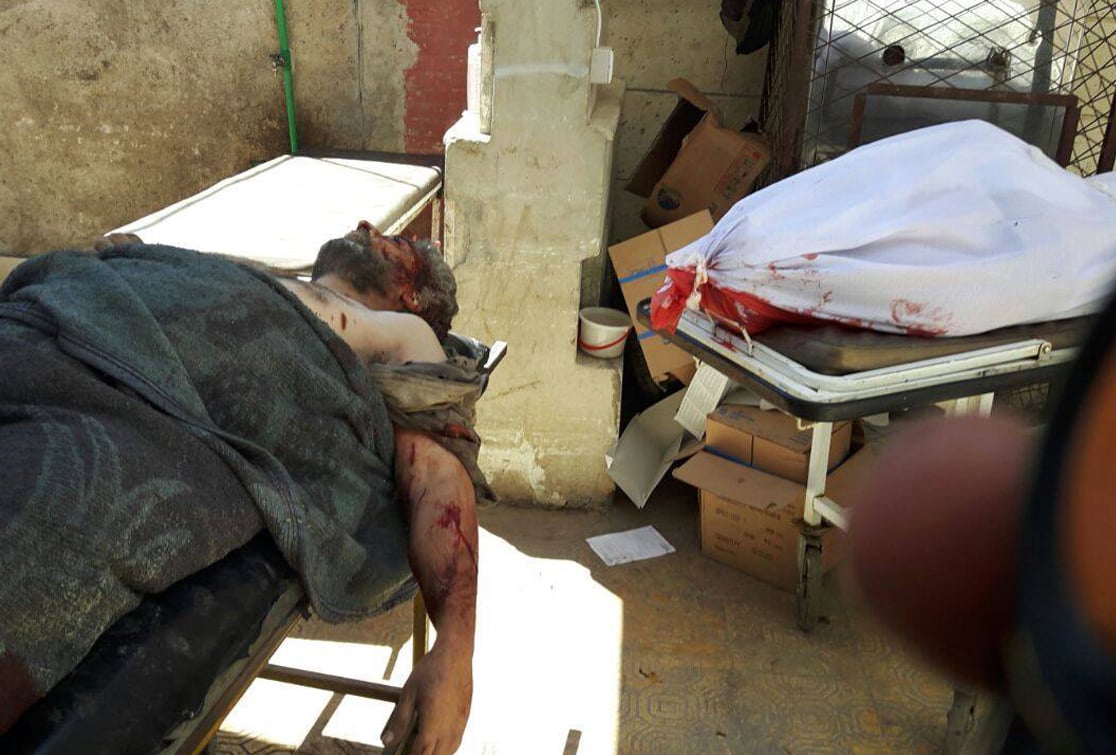Including 33 Massacres in June

SNHR has published its monthly special report documenting the massacres perpetrated by the different conflict parties in Syria for the month of June.
The report notes that the Syrian governorates have seen a notable and a relatively good decline in killing rates compared to the previous months since 2011 after the commencement of the Cessation of Hostilities statement on 27 February 2016. Nonetheless, violations haven’t stopped and mainly by the Syrian regime and its allies who are seemingly the most affected party by the ongoing Cessation of Hostilities.
Additionally, the report notes that one day after the High Negotiation Committee decided to postpone its participation in Geneva talk on 19 April, government forces and Russian forces resumed bombing areas outside the Syrian regime’s control and the killing rates increased back to its former levels before the Cessation of Hostilities.
The report outlines the massacres of the first half of 2016 and the massacres that was perpetrated during June. The report refers to an incident as a massacre if it involves the killing of five peaceful people at once. Based on this definition, the report records that 204 massacres were perpetrated in the first half of 2016 where 105 massacres were perpetrated by government forces, 66 by allegedly Russian forces, 15 by ISIS, eight by armed opposition factions, five by the international coalition forces, and five by unidentified groups.
The report details the distribution of the massacres across governorates as Aleppo saw the highest number of massacres with 61 massacres followed by Idlib with 33 massacres, Damascus suburbs: 27 massacres, Der Ez-Zour: 28 massacres, Homs: 19 massacres, Al-Raqqa: 21 massacres, Al-Hasaka: four massacres, Hama: four massacres, Daraa: three massacres, Latakia: three massacres, and Tartus with one massacre.
The report says that 2376 individuals were killed in those massacres including 654 children and 423 women meaning that 46% of the victims were women and children which is a considerably high percentage that indicates that civilian residents were the target in most of these massacres.
Government forces killed 1053 individuals including 312 children and 185 women, while Russian forces killed 842 individuals including 236 children and 117 women, while ISIS killed 304 civilians including 34 children and 90 women.
Additionally, armed opposition factions killed 56 civilians including 25 children and eight women, and international coalition forces killed 86 civilians including 38 children and 18 women in addition to 38 civilians, including nine children and five women, who were killed by unidentified groups.
The report records that 24 massacres were perpetrated by government forces in June 2016, while Russia perpetrated four massacres in June. Also, ISIS and the international coalition have both perpetrated two massacre while armed opposition factions perpetrated one massacre.
According to the report, government forces perpetrated eight massacres in Idlib, five in Al-Raqqa, four in Deir Ez-Zour, three in Damascus suburbs, two in Homs, one in Aleppo, and one in Hama. Russian forces perpetrated four massacres in Aleppo while ISIS perpetrated one massacre in both Deir Ez-Zour and Al-Raqqa. Additionally, armed opposition factions perpetrated one massacre in Aleppo and international coalition forces perpetrated two massacres in Aleppo.
The report notes that 421 individuals including 156 children and 70 women were killed in the massacres of June 2016 meaning that 54% of the victims were women and children which is a considerably high percentage that indicates that civilian residents were the target in most of these massacres.
The report outlines the death toll of the massacres that were perpetrated in June where government forces killed 315 individuals including 112 children and 57 women while Russian forces killed 29 individuals including 10 children and three women. Additionally, 15 civilians were killed in the massacres perpetrated by ISIS while six civilians, including two children, were killed in the massacres perpetrated by armed opposition factions. Furthermore, 56 civilians, including 32 children and 10 women, were killed in the massacres perpetrated by the international coalition forces.
The report affirms that the bombing incidents, deliberate or indiscriminate, targeted armless civilians, thus, government forces and Russian forces have violated the articles of the international human rights law which guarantee the right to life. Furthermore, these violations were perpetrated during a non-international armed conflict which amount to war crimes as all elements of a war crime have been fulfilled.
Furthermore, these attacks, especially bombing, have resulted in collateral damage that involved casualties, injuries, and damages to civil facilities. There are strong indicators that prove that the damage was deeply severe compared to the estimated military benefit. In all of the cases, we didn’t find any military targets before or during these attacks.
Additionally, the magnitude of the massacres, its frequent pattern, the exaggerated use of strength, its military nature, the indiscriminate manner of the bombing, and the coordinated approach of these attacks must be based on high orders, and a state policy.
The report calls for referring the case in Syria the International Criminal Court and stop the disrupting of the decisions that must be adopted by the Security Council against the Syrian government. This disruption is a wrong message to all dictatorships around the world and supports the culture of crime. Also, immediate sanctions must be imposed on all individuals involved in widespread human rights violations.
Moreover, the report calls for binding the Syrian government to allow all relief and human rights organizations to enter Syria, in addition to the International Intendent Commission of Inquiry on the Syrian Arab Republic and journalists and let them work without any obstructions.
The report emphasizes that all militias that are fighting with the Syrian government and have committed widespread massacres such as Hezbollah, other Shiite brigades, National Defense Army, and “Shabiha”, must be listed on the international list of terrorist organizations.
Finally, the report calls for the implementation of “Responsibility to Protect” norm agreed to by the United Nations General Assembly in 2005, in Syria as it is direly needed there.


